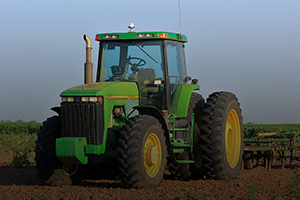Fully Autonomous Farming

Although self-driving tractors have been around for quite some time, fully autonomous equipment is only now beginning to emerge. At this year’s Consumer Electronics Show, John Deere unveiled an upgrade package for its 8R 410 tractors that allow a farmer to control the machine from a smartphone.
The system consists of two stereo camera pods mounted on the front and back, and an Nvidia graphics processing unit (GPU) that enables the farmer to view images in real-time on an Android or iOS device. Each pod contains three pairs of cameras that continuously scan for obstacles. The lights are turned on whenever the tractor is moving in order to avoid false alerts that may be caused by shadows, leaves or variations in soil color. Boundaries and barriers are mapped during the initial setup either by manually driving the tractor or using an all-terrain utility vehicle connected to the company’s mapping technology. After that, the farmer must be with the vehicle at the start of each day of operation. Obviously, uninterrupted wireless access throughout the area to be farmed is a must.
Fully autonomous operation is limited to tilling the field prior to planting. This is viewed as the simplest task to automate, and one that often gets skipped due to labor shortages. But proper tilling can save time and money later in the growing season by reducing the reliance on chemical fertilizers. The upgrade is currently available for tractors built in the last three years, although older machines may eventually be able to be retrofitted as well. With population still on the rise and the average age of farmers nearing 60, autonomous farming may become more a necessity than a luxury.
For information: John Deere World Headquarters, One John Deere Place, Moline, IL 61265; Website: https://www.deere.com/en/index.html